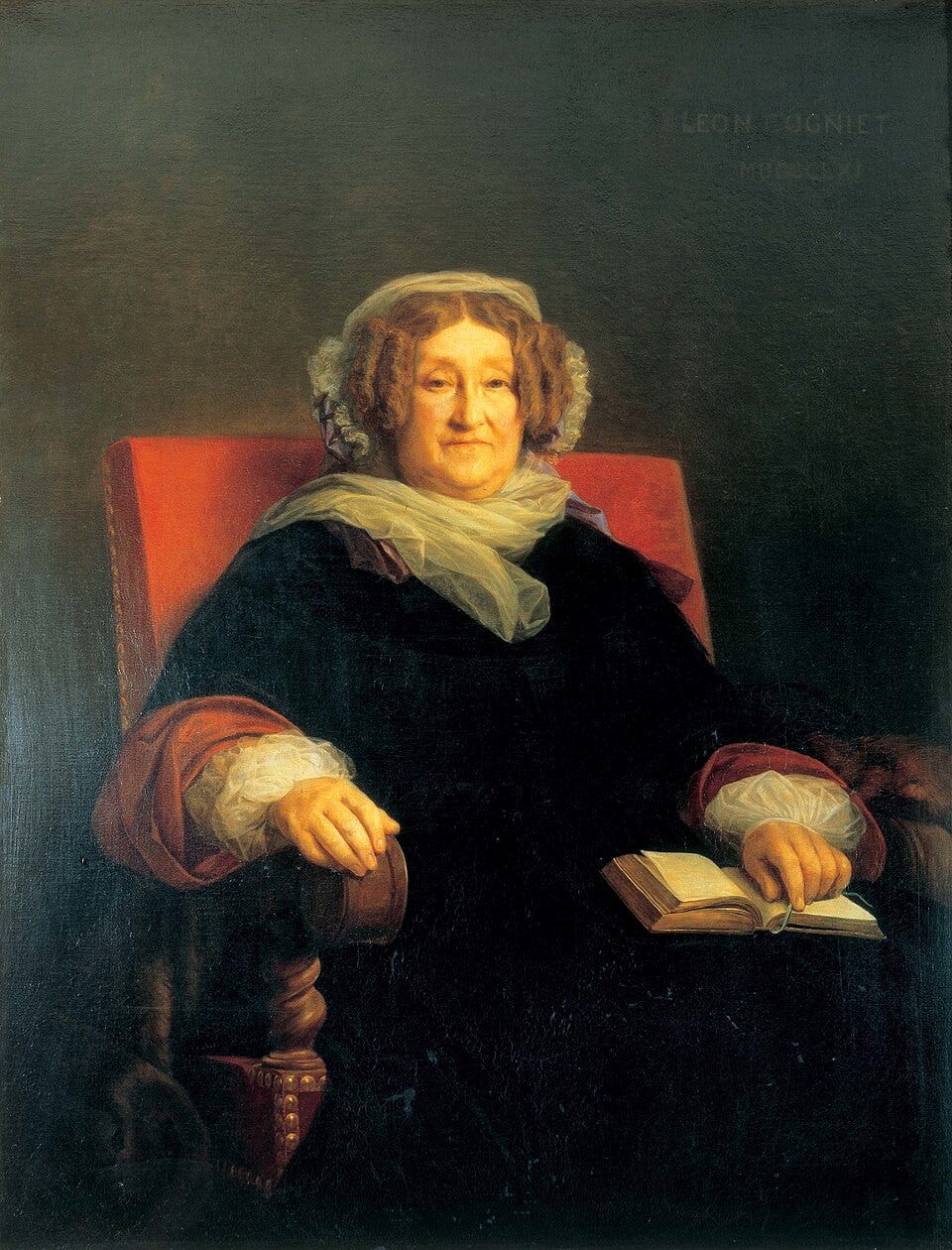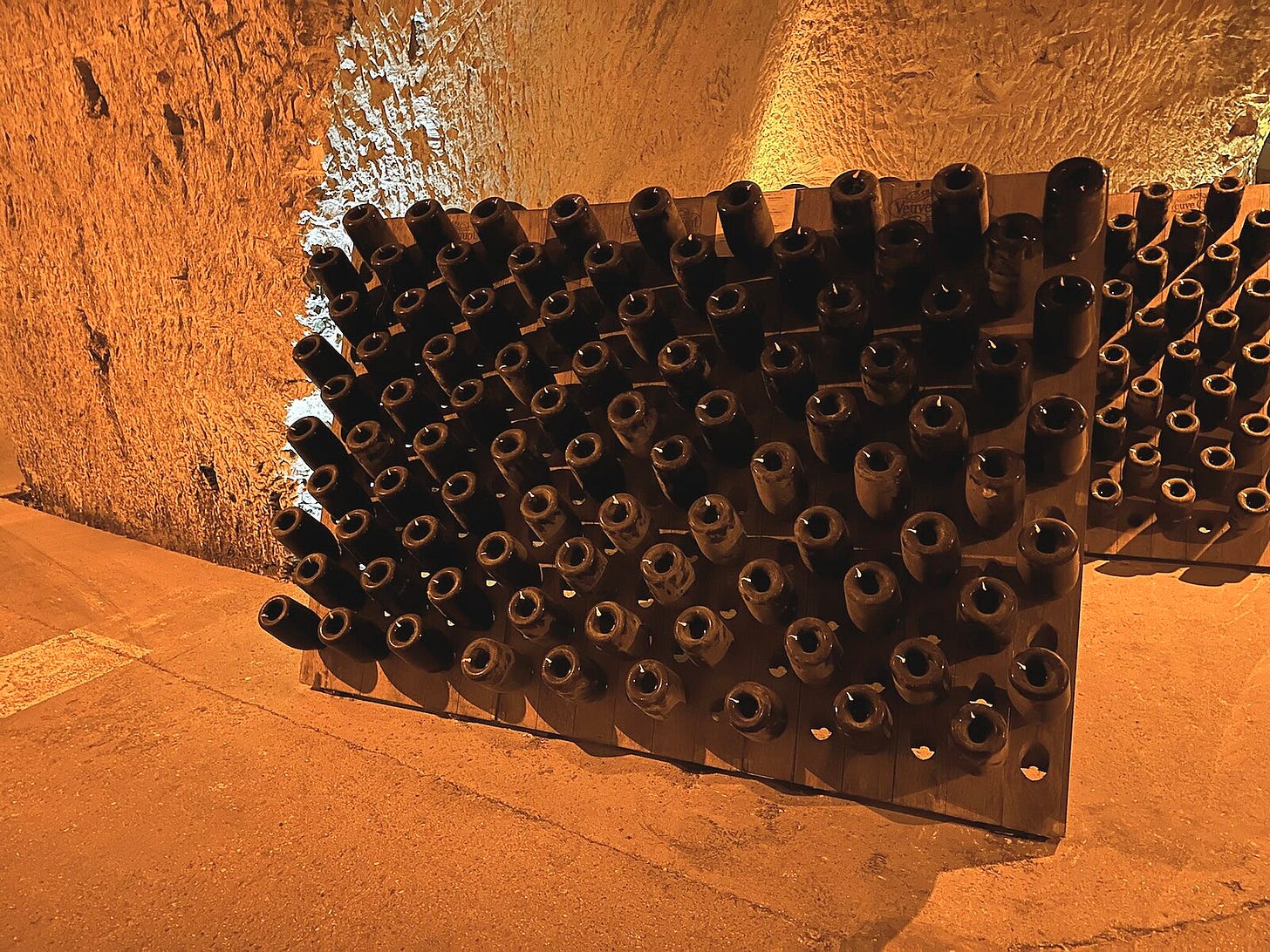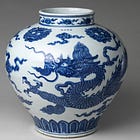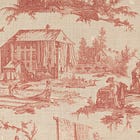Madame Clicquot: The Woman Who Revolutionized Champagne
When Barbe-Nicole Clicquot took over the family champagne business against the backdrop of the Napoleonic Wars, she defied the odds and transformed Veuve Clicquot into an international icon.

Philippe Clicquot had weathered many storms in his life. He had built a successful career as a textile merchant, navigating industrialization, the French Revolution, and securing his family’s future by arranging the marriage of his only son to the daughter of his greatest competitor. Together, the Clicquot and Ponsardin families dominated the textile industry in and around Reims, France.
But nothing could have prepared him for the death of his son François at the age of thirty.
In the autumn of 1805, François caught some terrible illness (possibly typhoid?) and after twelve days of relentless fever, he died. He left behind his 27-year-old wife, Barbe-Nicole, and his six-year-old daughter, Clémentine.
The family was devastated by the loss. Though their marriage was arranged, François and Barbe-Nicole grew to love each other, and they shared a mutual passion: champagne.
Textiles were the family’s main enterprise, though they did own a few vineyards. In 1772, Philippe had established a modest champagne business. François saw greater potential in the industry; he poured his heart into expanding the family business in the final years of his life. Sadly, his efforts garnered little success. First the French Revolution and now Napoleon’s campaigns certainly didn’t help. The champagne business was struggling, and vicious rumors began to spread around Reims that François hadn’t died by fever, but by suicide.
To hell with champagne. Philippe’s son was dead. He wanted nothing more than to sell the vineyards and put the business behind him.
Then, his daughter-in-law came to him with a proposal.
Barbe-Nicole Clicquot Ponsardin was an intelligent young woman, and she was determined to see her and her husband’s goals for the champagne business brought to fruition. She was also in an advantageous position to take control of the reigns, because Madame Cliquot was a veuve—a widow.
Women under the Napoleonic Code were second-class citizens with little more rights than children. They were the property of their fathers, and then their husbands. Only upon widowhood could a woman retain control of her late husband’s property and businesses. So long as she never re-married, Madame Clicquot could take ownership of the champagne business and ensure that the passion she shared with François did not fall into the hands of another man. Furthermore, she was willing to invest her own inheritance to make it happen.
As Philippe was part-owner, she would need his approval to put her plan in motion. He agreed to let her take over, on the condition that his daughter-in-law have a male business parter with experience in the wine industry. Selected for the job was a man named Alexandre Fourneaux.
The partnership with Forneaux didn’t last long. With the Napoleonic Wars casting their deadly shadow over Europe, and the British blockade thwarting French exports, the business suffered. By 1812, their champagne sales fell to just 10,000 bottles that year. At that point, Forneaux had already jumped ship.
Philippe asked Barbe-Nicole if she would consider selling now, after years of turbulence. But Madame Clicquot refused to be defeated. She had a greater vision not just for her business, but for the champagne industry as a whole. The Widow Clicquot could not stop Napoleon from waging war, but she didn’t need to lose time, either. Rather than wallowing over factors beyond her control, she began experimenting.
How did Clicquot eventually turn the business around? The harvests of the early 1800s were poor, but opportunity struck in 1810. That year brought mild weather and bountiful yields. Traditionally, champagne was produced by blending wine from different years to achieve a consistent product. But Clicquot had an idea: after such a miraculous harvest, she would instead produce a line of champagne using wine from only that year. In doing so, she created the first known champagne vintage. She renamed the company “Veuve Clicquot Ponsardin” so that anyone who drank her champagne would know that a woman was at the helm.
The following year, another miracle played across the heavens: the Great Comet of 1811, visible to the naked eye around the world for about 260 days. Though harvests were mixed that year across the European continent, it was a very good year for wine-producing regions. Clicquot decided to create another vintage for 1811, and she stamped the corks with the image of the comet.

By 1814, Madame Clicquot had a brilliant product and savvy marketing. In March, Napoleon abdicated, and she took a leap: she hired a Dutch ship and sent 10,000 bottles of champagne (along with her salesman, Louis Bohne) across the Baltic.
Having been cut off from French products for years, the Prussian and Russian nobility quickly bought up Madame Clicquot’s vintages. She sent another shipment of 12,500 bottles. That, too, sold out. By the fall, she had sold another 70,000. Buoyed by these positive results, Madame Clicquot kept innovating.
There was the question of the champagne’s clarity. Champagne is produced in two stages: the grapes undergo a first round of fermentation to create wine, and then, a mixture of yeast and sugar is added to each bottle for a second fermentation. This produces carbon dioxide—champagne’s distinctive bubbles. However, the second fermentation also gave the champagne a murky, unappealing color.
With trial and error, Madame Clicquot discovered that if bottles were stored neck-down and gently rotated, it would be easier to remove the sediment, thereby preserving the wine’s clarity. The storage rack she invented in 1816 is called a riddling table, the precursor to the riddling racks used today.
Clicquot was also passionate about devising a new method of making rosé. Before her experiments, rosé was made by coloring white wine with berries or through red wine maceration. She wanted to develop a champagne that not only had a pink color, but a unique flavor that she could market to customers. In 1818, she found that mixing white wine with a bit of red wine indeed resulted in a new flavor profile, making her the inventor of the first blended rosé.
By 1821, annual sales reached over 280,000 bottles, with sales continuing to climb throughout the 19th century. Veuve Clicquot Ponsardin became famous throughout Europe and North America, and the Widow Cliquot was so synonymous with the brand’s prestige that the company kept the name after her death in 1866 at the age of 88. Today, Veuve Clicquot produces approximately 20 million bottles per year.
Dear reader, I have a confession to make: I am not fond of alcohol, so I don’t drink. But when I learned Barbe-Nicole Clicquot’s story, I was so inspired by her perseverance, her business acumen, and most of all, her love of craft. In remaining steadfast to her vision, she transformed a major sector of France’s economy for generations to come.





Thank you for sharing this story, so many of us equate bubbly (sparkling wine) to the term champagne; not recognising the IP associated to the term.